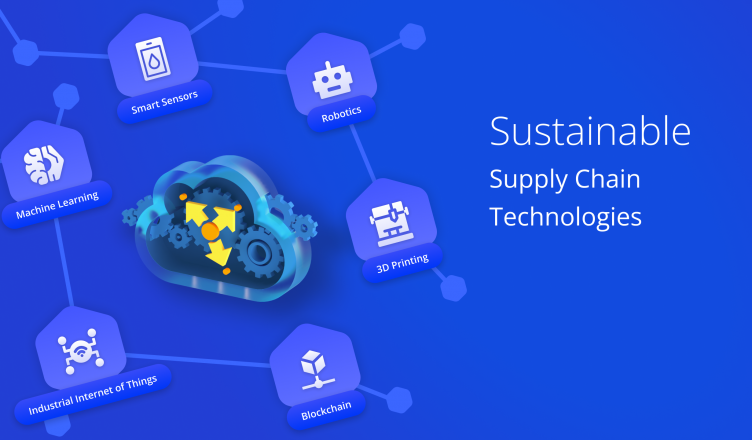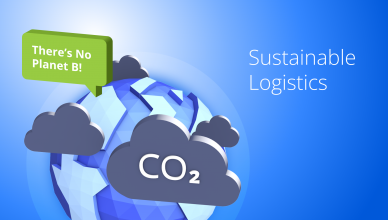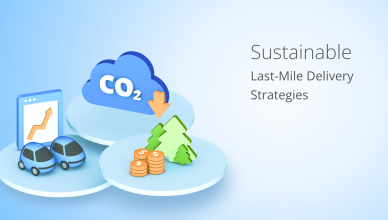Is a sustainable supply chain necessary?
Supply chains consume a large amount of energy and emit a lot of carbon. According to the CDP report, supply chain emissions are, on average, 11.4 times higher than operational emissions.
Therefore, you need to make your supply chain green to offset carbon emissions and improve your brand image.
Furthermore, today’s consumers prefer purchasing from sustainable brands. According to Economist’s essay, 85% of consumers are more likely to buy from a company with a good reputation for sustainability.
In short, making an eco-friendly supply chain is a good practice for any business. In addition to that, certain technologies play a critical role in supply chain sustainability strategies.
They can help minimize waste, provide end-to-end visibility, and improve energy efficiency across the entire supply chain operation.
What are those technologies?
How can they help with sustainable supply chain management? Let’s find out.
Table of Contents
#1 Artificial Intelligence and Machine Learning
Artificial intelligence and machine learning are transforming every industry, and the supply chain is no exception.
According to Meticulous Research, the AI in the supply chain market will be $21.8 billion by 2027.
The reasons are simple. AI makes complex and challenging tasks more manageable.
In addition, it saves time and energy, reduces expenses, and improves revenue.
According to research conducted by McKinsey, 61% of executives who introduced artificial intelligence in their supply chain reported a 50% increase in revenues and reduced costs.
And according to a PwC research report, AI can reduce gas emissions by 4% by 2030. That’s equivalent to around 2.4 gigatons of carbon dioxide.
There are many ways AI and machine learning ensure supply chain sustainability, such as:
- Improving demand forecasting: Machine learning identifies patterns and influential factors in the supply chain with algorithms and ‘constraints-based’ modeling. Such data-rich modeling helps make informed decisions about inventory stocking.
- Optimizing routing efficiency and delivery logistics: AI-driven route optimization software creates the most efficient routes from all the possibilities. Thus minimizing carbon footprint. Learn how Route4Me ensures sustainability through carbon-neutral last-mile optimization.
- Improving health and longevity of vehicles: AI and machine learning analyzes data to predict mechanical failures of vehicles to reduce downtime and emissions.
To summarize, AI cuts down error rates significantly, reduces operational expenses, and optimizes supply chain flow. But if you don’t leverage them, your competitors will. And they will leave you far behind the race in both sustainability and profitability.
Want To See For Yourself How Route4Me Can Boost Your Profits?

#2 Industrial Internet of Things (IIoT)
The internet of things (IoT) is a network of physical objects that transfers any collected data over a wireless network without human assistance.
The IIoT already plays a critical role in the supply chain and logistics. And with increasingly diverse applications, it will continue growing in importance.
According to Gartner’s report, 50% of large companies will use IIoT and other advanced technologies to support supply chain operations.
IoT can improve warehouse management, vehicle tracking, inventory control, vehicle maintenance, and sustainability.
There are many ways Industrial IoT can help create a sustainable supply chain, such as:
- Identify supply chain issues in advance: IoT-sensor-equipped machinery can help identify and fix problems before they could disrupt your supply chain. This enables you to save time, money, and efficiency.
- Reduces Waste: IoT-embedded sensors can monitor the products’ condition like heat and humidity. This helps determine whether they are defective. You can send those merchandise off for repair or replacement by detecting faulty goods and reducing waste.
- Ensure Warehouse Workers’ Safety: IoT technology can help your employees avoid work-related accidents. For example, computerized systems can handle repetitive tasks potentially hazardous to warehouse workers.
- Makes the Transportation Fuel-Efficient: IoT detects the most fuel-efficient route for your goods during the logistics process and reduces last-mile emissions.
For example, a multi-stop route planner can help you with pick-and-pack optimization to create optimal pick-and-pack routes inside your warehouse or yard.
Such software also comes with a GPS tracking app to help you track your vehicles in real-time. It also offers geofencing technology to automate check-in and checkout.
Learn how industrial IoT can revolutionize vehicle route planning.
- Eliminates Human Errors: IoT technology increases efficiency by collecting data automatically at the granular level for management to use.
#3 Robotics
According to Adobe’s eCommerce division report, the pandemic boosted online shopping by $183 billion. And at the same time, customer expectations for cheaper and faster delivery have gone above the roof. This has put tremendous pressure on warehousing and last-mile logistics.
But robotics technology can increase productivity, reduce labor costs, and improve efficiency.
Robots can pick and pack, lift heavy loads, move shelves, and manage paper files and archives.
In addition, robotics can ensure carbon-neutral enablement of your supply chain. Because robots are highly accurate and do not need as much energy to operate as your employees do. And with the help of delivery management software, you can automate task allocation and execution. This helps save more energy.
For instance, eliminating unnecessary vehicle idling or assigning jobs to suitable robots based on payload capacities and dimensions.
According to the MHI Annual Industry report, around 32% of supply chain professionals use robotics and automation. And the global warehouse robotics market will be $9.1 billion by 2026, according to Markets and Markets Research.
Gartner even recommends that supply chain organizations have a Chief Robotics officer to implement robotics and automation.
#4 3D Printing Technology for Supply Chain Sustainability
3D Printing enables you to maintain virtual inventories and manufacture stock on-site and on-demand. This means you can eliminate a significant amount of shipping and packaging expenses and energy.
Moreover, you can use recycled materials from within the supply chain as the base materials. In fact, according to a study conducted by the University of Groningen, Netherlands, 3D printing could reduce carbon dioxide emissions by 5% by 2025.
Therefore, certainly, 3DP is a greener, more energy-efficient, and cost-efficient production method.
#5 Blockchain Technology for Green Supply Chain
Blockchain technology can make your business more transparent and secure, providing a record of immutable truth across the supply chain. You can accurately record transactions and track tangible or intangible assets in your network.
Blockchain technology helps you have a better line of insight into your product’s history. Furthermore, it alleviates bottlenecks and redundancies and eventually consumes fewer resources.
In addition, it provides transparency and trust between the supply chain stakeholders and ensures healthy supplier and customer relationships.
According to Markets and Markets, the blockchain supply market will be 3,272 million by 2026.
#6 Smart Sensors
Smart sensors in the supply chain include real-time location status, vehicle temperature, the pressure of vehicles, and more.
This broadens management visibility, reduces repair costs and maintenance downtime, and offers real-time inventory tracking with improved demand planning. Moreover, it strengthens product life cycle management and ultimately improves customer satisfaction.
Conclusion about Sustainable Supply Chain Technologies
The goal of a green supply chain is to maximize overall social, ethical, and environmental impact. And advanced technologies like Blockchain, AI, and IIoT can play a critical role in achieving the goal and much more.
Want To See For Yourself How Route4Me Can Boost Your Profits?





